U.S. announces new NUCLEAR weapon 24 times the power of one dropped on Hiroshima – days after it emerged China plans to double its warheads by 2030
The Pentagon has announced plans for a new atomic bomb that is 24 times as powerful as the bomb dropped on Hiroshima in 1945.
It comes days after it was revealed that China plans to double its arsenal of nuclear warheads to more than 1,000 by 2030.
America’s proposed new B61-13 nuclear gravity bomb would be dropped from aircraft including the $692 million B-21 Raider stealth bomber, currently under development.
Gravity bombs are unguided, but the new one would have a tail kit that helps with targeting and makes it more accurate.
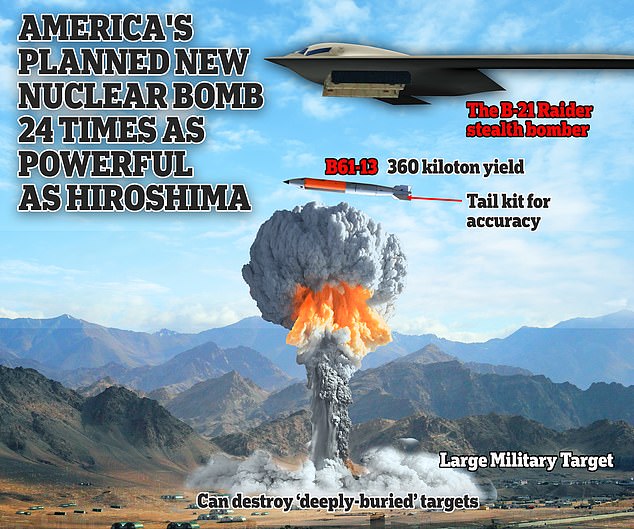
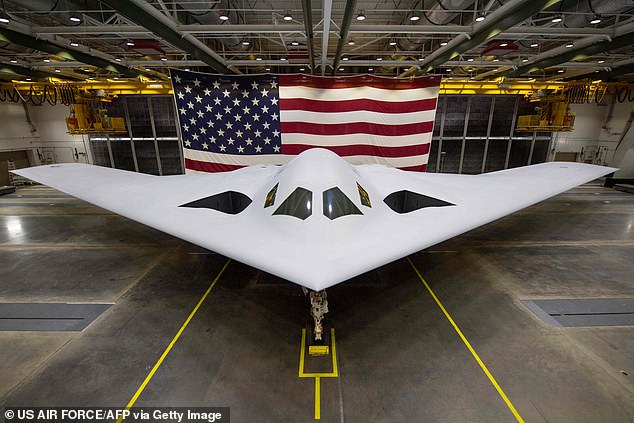
The B-21 Raider would be equipped with the new nuclear weapon
The new weapon must be approved by Congress, but received immediate signs of approval from Republican hawks.
The Pentagon said, “The B61-13 will strengthen deterrence of adversaries and assurance of allies and partners by providing the President with additional options against certain tougher, broader-area military targets.”
Assistant Secretary of Defense for Space Policy John Plumb did not mention China or Russia when discussing the new weapon.
But he said: “Today’s announcement reflects a changing security environment and increasing threats from potential adversaries.
“The United States has a responsibility to continue to assess and deploy the capabilities we need to credibly deter and, if necessary, respond to strategic attacks, and to reassure our allies. ‘
He added: “The B61-13 represents a reasonable step towards meeting the challenges of a highly dynamic security environment. It provides us with additional flexibility.”
The weapon is the latest version of the B61 gravity bomb, which has been a key part of America’s nuclear deterrent since the Cold War.
It will have a maximum yield of 360 kilotons – 24 times the roughly 15 kiloton yield of the bomb dropped on the Japanese city of Hiroshima on August 6, 1945.
The bomb that fell on Nagasaki three days later had a yield of about 25 kilotons.
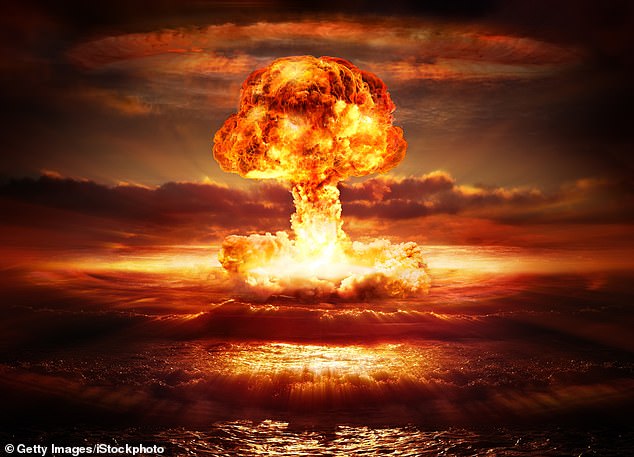
An atomic bomb test over the ocean
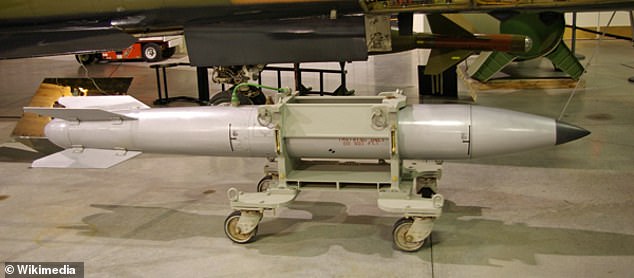
An earlier version of the B61 thermonuclear bomb
Production of what is expected to be a small number of B61-13s will not increase the total number of nuclear weapons in the US arsenal as others will be retired.
The US currently has approximately 3,700 nuclear warheads, of which 1,419 have been deployed.
B61-13s will have less than a third of the power of the largest US nuclear weapon – the B83 – which has a yield of 1.2 megatons, 80 times the Hiroshima bomb.
Barack Obama tried to decommission the B83, but Donald Trump put an end to that attempt.
There were suggestions that the B61-13 proposal could be used by the Biden administration to convince Republicans in Congress to abolish the B83.
During the 2020 election campaign, Biden promised to bring us closer to a world without nuclear weapons so that the horrors of Hiroshima and Nagasaki will never be repeated.
However, the US is now pursuing its most ambitious nuclear weapons efforts since World War II.
The country will spend more than $750 billion over the next decade to renew almost every part of its aging nuclear defense, because some systems and components are more than 50 years old.
Los Alamos National Laboratory in New Mexico has hired 3,300 employees over the past two years, with a workforce now of more than 17,000.
Workers produce plutonium cores, which are key components for nuclear weapons.
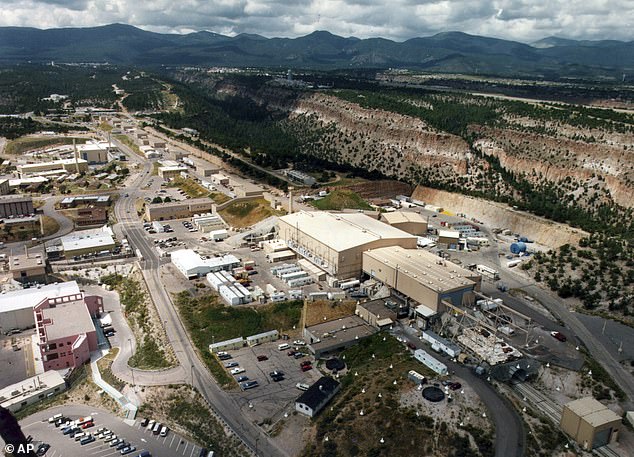
An aerial view shows the Los Alamos National Laboratory
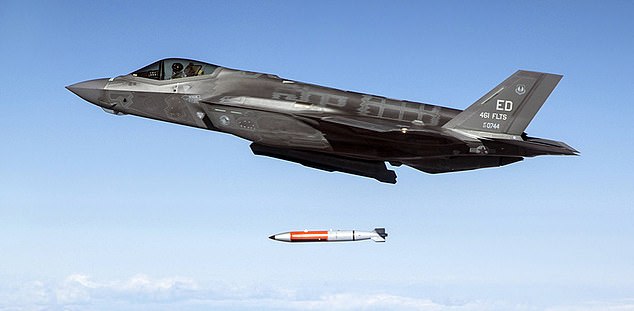
A plane drops a gravity bomb
Hans Kristensen and Matt Korda of the Federation of American Scientists’ Nuclear Information Project said the number of targets that would need such a high-yield gravity bomb was limited.
It was therefore likely that only about 50 of the weapons would be produced.
They wrote: “Although government officials maintain that the B61-13 plan is not driven by new developments in hostile countries, or by a new military targeting requirement, increasing the accuracy of a high-yield bomb obviously has target implications.
“Detonating the weapon closer to the target increases the likelihood of destroying the target, and hypothetically a very hard facility could be destroyed.”
The Pentagon has not provided an estimated cost for the project.
Republican Congressman Mike Rogers, chairman of the House Armed Services Committee, welcomed the proposal but said it was a “modest step in the right direction.”
He said: ‘The B61-13 is not a long-term solution, but it will provide our commanders with greater flexibility against these targets. Addressing this threat will require a dramatic transformation of our deterrent posture, not incremental or piecemeal changes.”

US President Joe Biden (R) and Chinese President Xi Jinping (L) meet on the sidelines of the G20 summit in Nusa Dua on the Indonesian holiday island of Bali on November 14, 2022
Earlier this month, it emerged that China has amassed at least 500 operational nuclear warheads, which was more than the US had previously estimated.
In its annual China Military Power Report, the Pentagon said Beijing had accelerated production and expected it to double by the end of the decade.
The revelation was a further blow to relations between the world’s two largest economies, which are already at their lowest point in years.
In addition to China’s nuclear surge, tensions have increased over a range of issues, including Beijing’s aggressiveness toward Taiwan, its military activities in the South China Sea, trade and human rights.
Beijing has committed to a ‘no first use’ nuclear weapons policy, meaning it would never launch a pre-emptive strike.
The US does not adhere to a ‘no first use’ policy and says nuclear weapons would only be used in ‘extreme circumstances’.
